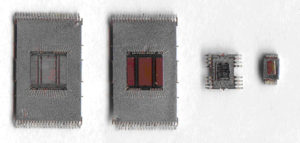Crack ST62T62 STM Microcontroller
If a pin associated with interrupt vector #2 is configured as interrupt with pull-up, whenever vector #2 is configured to be rising edge sensitive (by setting the ESB bit in the IOR register), an interrupt is latched although a rising edge may not have occured on the associated pin when Crack ST62T62 STM Microcontroller.
This is due to the vector #2 circuitry.The workaround is to discard this first interrupt request in the routine (using a flag for example).
Masking of One Interrupt by Another on Vector #2.
When two or more port pins (associated with interrupt vector #2) are configured together as input with interrupt (falling edge sensitive), as long as one pin is stuck at ’0’, the other pin can never generate an interrupt even if an active edge occurs at this pin to facilitate the process of ST62T46 Chip Source Code Extraction. The same thing occurs when one pin is stuck at ’1’ and interrupt vector #2 is configured as rising edge sensitive.
To avoid this the first pin must input a signal that goes back up to ’1’ right after the falling edge. Otherwise, in the interrupt routine for the first pin, deactivate the “input with interrupt” mode using the port control registers (DDR, OR, DR). An active edge on another pin can then be latched.
I/O port Configuration Spurious Interrupt on Vector #2
If a pin associated with interrupt vector #2 is in ‘in- put with pull-up’ state, a ‘0’ level is present on the pin and the ESB bit = 0, when the I/O pin is configured as interrupt with pull-up by writing to the DDRx, ORx and DRx register bits, an interrupt is latched although a falling edge may not have occurred on the associated pin when Crack MCU ST7FLITEBCM6 Locked Eeprom Memory.
In the opposite case, if the pin is in interrupt with pull-up state , a 0 level is present on the pin and the ESB bit =1, when the I/O port is configured as input with pull-up by writing to the DDRx, ORx and DRx bits, an interrupt is latched although a rising edge may not have occurred on the associated pin.


